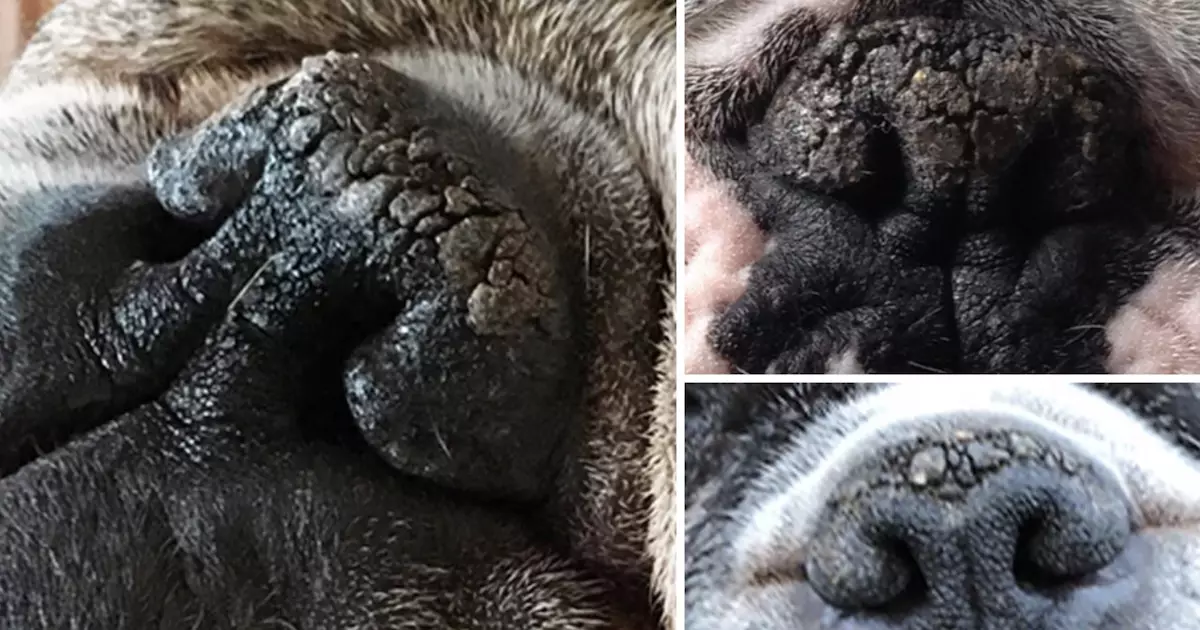Many dog owners may notice their beloved pet sporting a dry nose now and then. While a mild case is relatively common and often harmless, there exists a more severe condition called nasal hyperkeratosis. This rather complex term refers to the excessive build-up of keratin, a protein that forms crusty layers on the dog’s snout. What sets nasal hyperkeratosis apart from the usual dry nose is that it can cause discomfort and may subsequently hinder a dog’s ability to explore its world through scent. This issue is particularly pronounced among certain dog breeds, frequently linked to an underlying weakened immune response.
The Breeds That are Most Affected
Certain dog breeds seem predisposed to this condition due to their unique physical characteristics. Bulldogs, Pugs, Boxers, and many small or excessively large breeds often fall into the category of dogs with dryer noses. Their conformational extremes, be it flat faces or robust bodies, tend to correlate with an impeded immune system. The interesting aspect of nasal hyperkeratosis is that while not life-threatening, it highlights the sensitivity of these breeds to environmental factors and overall health. An attentive dog owner will recognize that these physical traits can expose their furry friends to more than just cosmetic challenges.
Combatting the Crust: Treatment Options
If your dog is suffering from nasal hyperkeratosis, you might wonder what can be done to alleviate the discomfort. Thankfully, numerous products on the market target this specific concern, promising soothing solutions. Consistent application of specialized balms can be highly beneficial. For example, Natural Dog Company’s Snout Soother incorporates a blend of natural oils and butters designed to penetrate the layers of dry skin effectively.
When applying these products, a rigorous, consistent approach is vital. Experts recommend using the balm multiple times a day to ensure thorough moisture penetration. Observing the condition daily allows owners to adjust their approach based on how their dog’s nose responds. If you see improvement, transitioning to a maintenance schedule will help keep the snout in optimal condition. However, persistent crustiness may require more frequent treatments, especially for older dogs.
The Emotional and Behavioral Impacts of Nasal Health
It’s crucial to recognize that a dog’s health extends beyond physical attributes; it profoundly influences their emotional and behavioral wellness. A crisp and moisturized nose isn’t just about aesthetics; it plays an integral role in their ability to engage with the environment. Dogs rely heavily on their sense of smell to interpret their surroundings, communicate with other dogs, and even exercise their hunting instincts. Any impediment, like nasal hyperkeratosis, can lead to frustration and anxiety in pets who thrive on their sensory experiences.
Taking the proactive route in maintaining a dog’s nasal health can significantly enrich their quality of life. While nasal hyperkeratosis might typically be brushed off as a cosmetic issue, an informed pet owner will understand the broader implications for their furry friend.

